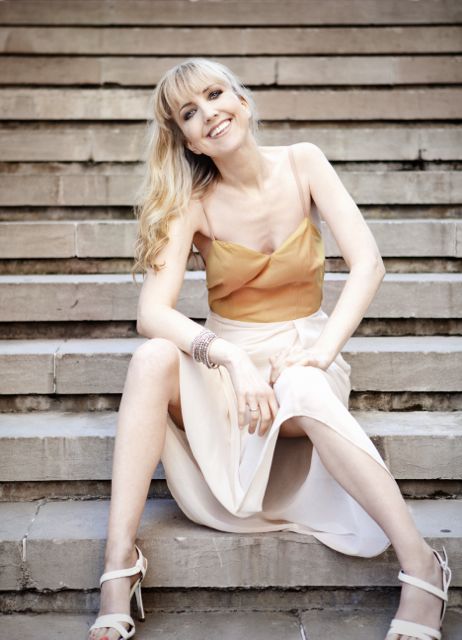Cornish’s chamber music proves more repetitious than rewarding
Film music has had an on-again, off-again relationship with the Western classical tradition since synchronized sound came to the movies in 1927. The field was pioneered by composers like Max Steiner and Erich Wolfgang Korngold, who worked in a Late Romantic tradition descended from Mahler and Strauss. Shostakovich and Toru Takemitsu wrote excellent film scores, while the work of Bernard Herrmann, Jerry Goldsmith, Georges Delerue, John Corigliano and Ennio Morricone could often stand alone as satisfying concert music.
The challenge film music faces within the classical tradition is how to work abstractly while tasked with the demands of underlining a narrative or setting the proper mood for action and dialogue. The composers are often excellent craftsmen and women, fine at imitating the work of others, but without coherent personal voices.
Jane Antonia Cornish is an award-winning British film composer who is releasing an album of chamber music on the Delos label April 28. She previewed this with a crowd-pleasing concert Monday night at SubCulture that featured a small group of excellent musicians: The Lee Trio, four cellists from the new music ensemble Decoda, pianist Steven Beck and violinist Miranda Cuckson.
Cornish’s chamber music and film music—as heard in scores like that for Fireflies in the Garden (2011)—is remarkably similar, and shows her voice clearly and strongly. The impression is not that she’s a film composer writing “serious” music, but a composer who writes music that happens to work well with film. Her sound is consistently evocative and poetically moody.
That was the sound of Duende, played by the Lee Trio. The music expresses a feeling of dramatic seriousness using minor key tonality, driving accents and effective variation of textures and dynamics. In the second movement, “Penseroso,” there is also an unexpected sound, a mash-up of Arvo Pärt’s Fratres with Pyramid Song by Radiohead. The repetitive phrases of the former never quite mesh with the harmonies of the latter, while bits of Pärt’s piece reappeared throughout the concert.
This developed into a problem as the program came together to give a clearer picture of Cornish’s thinking. She crafts elegant phrases, but then relies largely on repetition and dynamics to make them into pieces of music. Unlike Philip Glass’s additive repetitions, or Steve Reich’s gradual transformations, she follows Michael Nyman’s model, where repetition becomes a kind of assertive tautology. Her music has a more attractive sound than Nyman’s—her expression is deeper than his brittle artificiality—but like him she works with tonality while eschewing its most effective tools: modulation, and harmonic and rhythmic tension.
The dramatic feeling of her pieces can be powerful, and clearly attracts the musicians. But since she builds tension with gestures like rising and falling lines and juxtapositions of intensity and calm, there’s no chance for any structural resolutions that match the emotional exhalations.
Angela Lee could not find real meaning in the repeated arpeggiations of Elements I, but she played it as if everything depended on the outcome, as did the four cellists in Nocturne, a collection of minor key chords and lamentations with the occasional sound effect.
Beck was soloist for Ondes Eterne, the most elegant piece on the program but the one that suffered the most from the lack of any formal idea. The seemingly eternal flow of waves could be an effective means to play with the sensation of time, but neither it, nor any of the other works, were anywhere near that experimental.
The best piece was the last, the duet Revenire. This was the most formally developed composition and one that made the music effective and interesting in the abstract, as well as in its expression. Cuckson had something close to a perpetuum mobile line, while the piano part delved into counterpoint. The writing was fluid and the music explored higher and lower instrumental ranges that had been mostly ignored before.
Revenire is in an arch form, and the title hints at the structure, but this is not a sonata: when the violin and piano return to their opening music, there is no feeling of change, no sense that, having gone forward in time, the music or the musicians have experienced anything important. The piece, and the concert as a whole, is probably best thought of as a song without words, ready for radio play.
